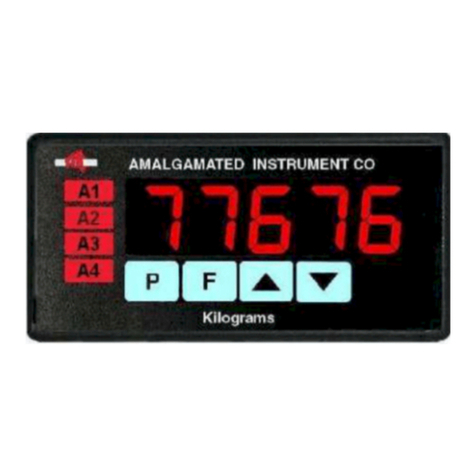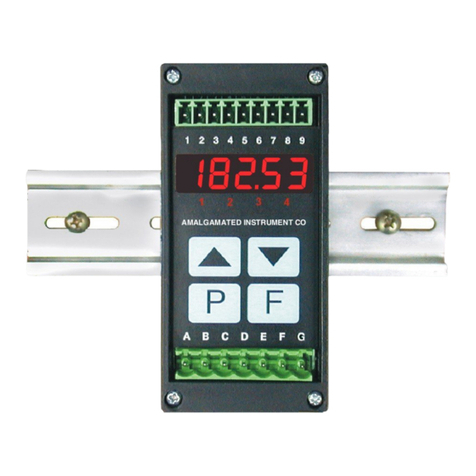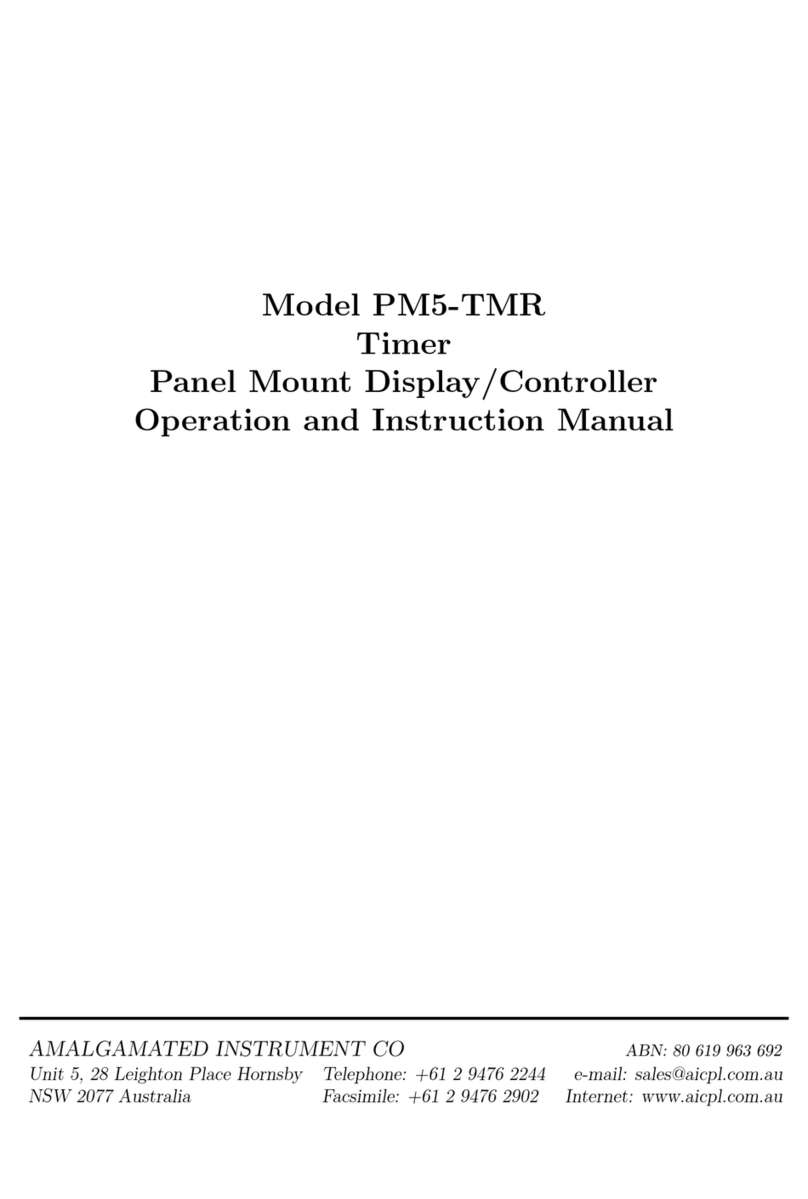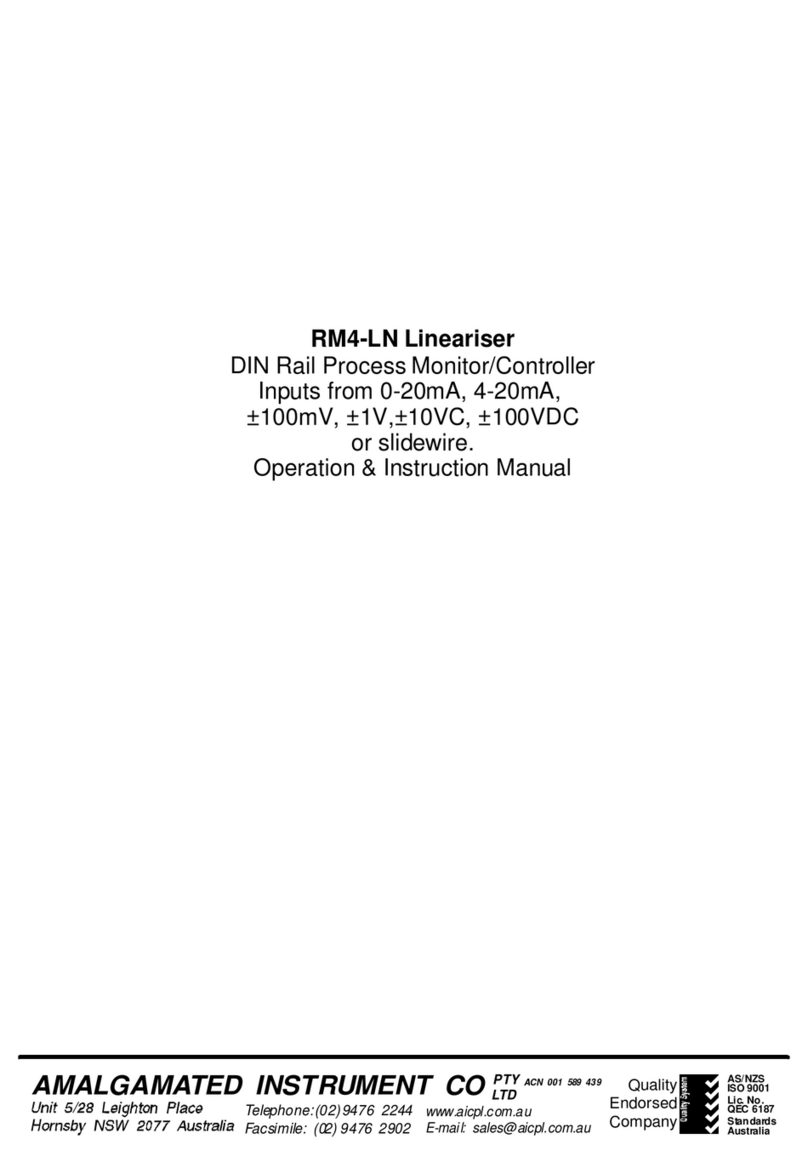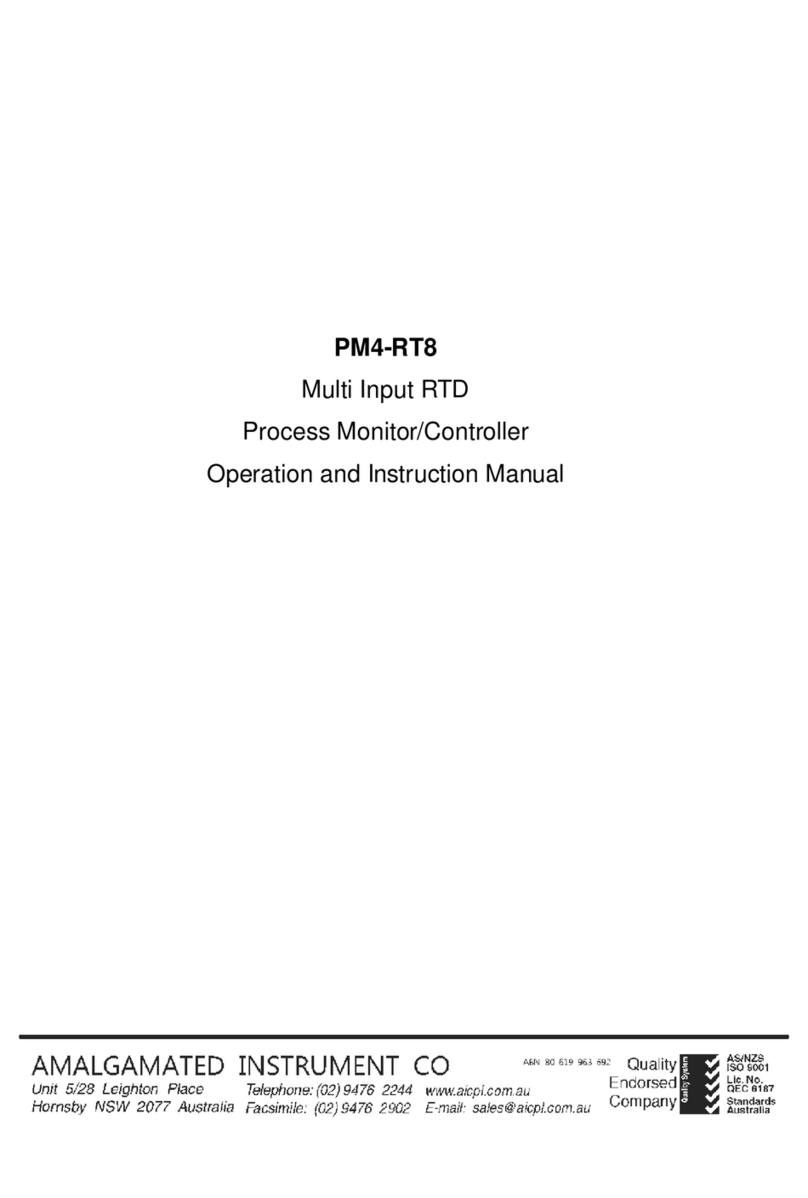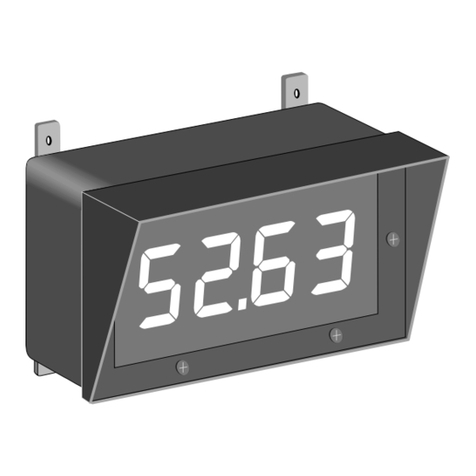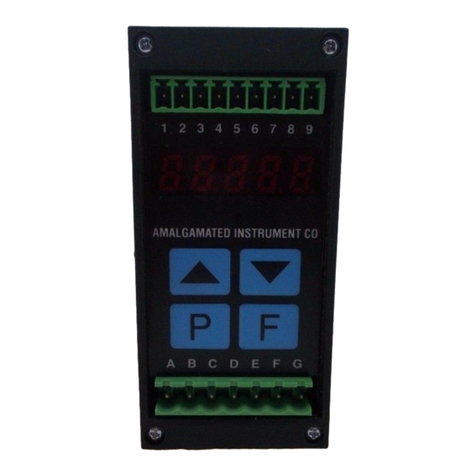
1 Introduction
1.1 General description
This manual contains information for the installation and operation of the RM4-AI Din rail moni-
tor/controller. The RM4 is a general purpose instrument which may be configured to accept inputs
of 0 to 5 Amps. For larger AC currents a current transformer can be used to with the instrument
then scaled to represent the larger current or in any engineering units. The RM4-AI displays in
true RMS. A user selectable “DC” link allows the DC components of a waveform to be taken into
account in the true RMS calculation or ignored. This “DC” link also allows the input to be 0-5A
DC rather than AC.
One standard inbuilt relays provide alarm/control functions. Two separate sets of calibration
scaling values can be stored with the display choice being made via the remote input.
Various combinations of one or two optional extra relays, analog (4-20mA, 0-1V or 0-10V) retrans-
mission/PI control or serial (RS232, RS485 or RS422) communications may also be provided as an
option. Alarms and retransmission may be set to operate from the live input value, the display
value or to follow either the tare, peak hold, display hold, peak memory or valley memory remote
input operations.
Unless otherwise specified at the time of order, your RM4 has been factory set to a standard
configuration. Like all other RM4 series instruments the configuration and calibration is easily
changed by the user. Initial changes may require dismantling the instrument to alter PCB links,
other changes are made by push button functions.
Full electrical isolation between power supply, input voltage or current and optional retransmission
output is provided by the RM4, thereby eliminating grounding and common voltage problems.
This isolation feature makes the RM4 ideal for interfacing to computers, PLCs and other data
acquisition devices.
The RM4 series of DIN Rail Process Modules are designed for high reliability in industrial appli-
cations. The 5 digit LED display provides good visibility, even in areas with high ambient light
levels. A feature of the RM4 units is the programmable display brightness function, this allows the
unit to be operated with low display brightness to reduce the instrument power consumption and
to improve readability in darker areas. To reduce power consumption in normal use the display
can be programmed to automatically dim or blank after a set time, the display will return to its
normal brightness level if any of the pushbuttons are pressed or if an alarm relay is activated.
1.2 Standard outputs
•One standard inbuilt relays provides an alarm/control function
(can be set for on/off alarm/control or PI control using pulse width or frequency control)
RM4AIMAN-2.1-0 3 of 46
